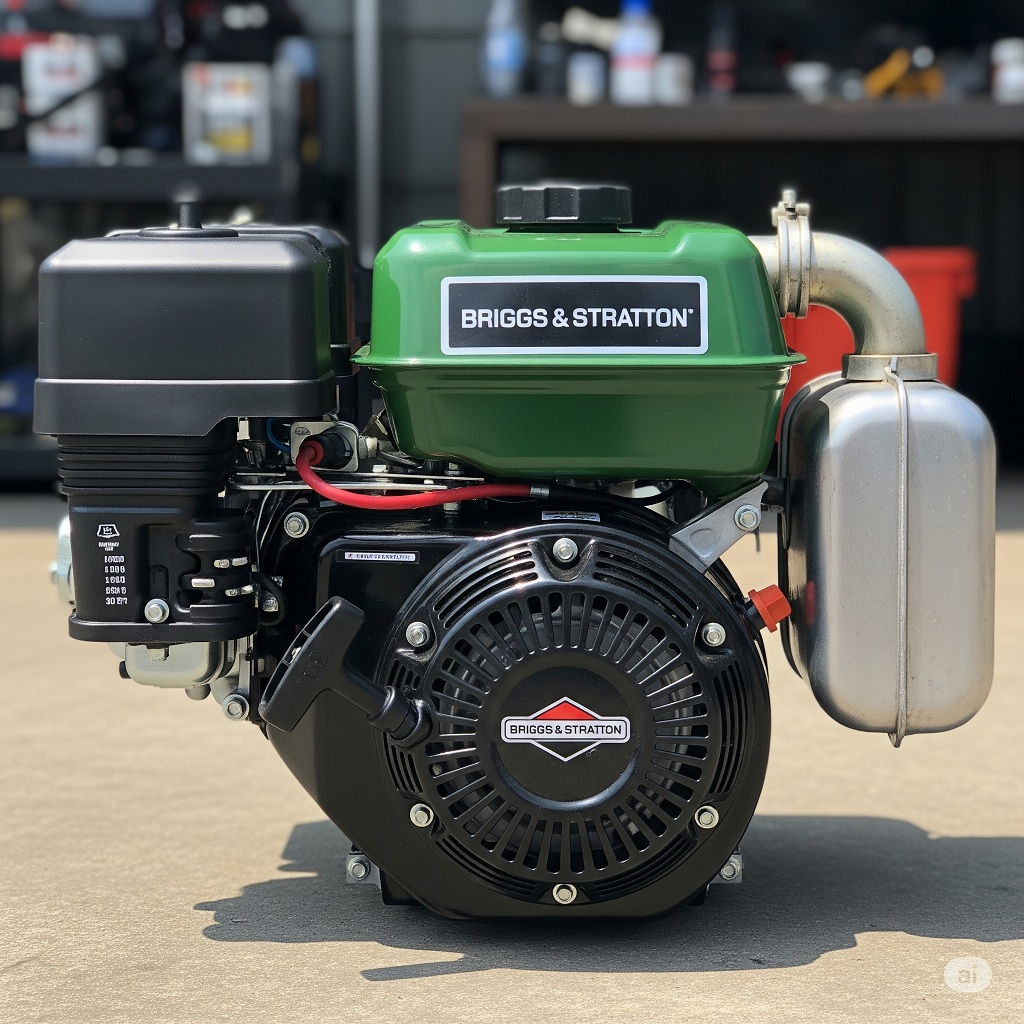
Briggs and Stratton engines are widely used in a variety of outdoor power equipment including generators, lawn mowers, pressure washers, and other machinery. These engines are known for reliability, but like any sophisticated machinery, they incorporate diagnostic systems that display fault or error codes to alert users to issues that could affect performance, safety, or engine longevity. Understanding these engine error codes, their causes, and how to fix them is crucial for maintaining optimal engine operation and minimizing costly repairs.
This extensive guide delves into the most common Briggs and Stratton engine error codes, the meanings behind them, typical symptoms, root causes, and step-by-step troubleshooting tips and solutions for 2025.
Overview of Briggs and Stratton Engine Diagnostic Systems
Modern Briggs and Stratton engines typically include the following diagnostic features:
- Electronic Control Unit (ECU): Monitors sensors and engine functions, generates error codes.
- Error Displays: Codes may appear as digital messages or through LED blink patterns on control panels.
- Sensor Monitoring: Engine oil pressure, temperature, ignition, speed, throttle position, fuel delivery, and emissions sensors are commonly monitored.
- Fault Codes: Each code corresponds to a specific fault, often standardized as fault numbers or patterns to indicate the system or sensor involved.
Common Briggs and Stratton Engine Fault Codes and Their Meaning
The codes may be represented as numeric or alphanumeric values or through LED flash sequences. Below is a list sorted by typical engine-related faults, covering what the codes mean and how to address them.
1. No Start / Failure to Crank
- Common Codes: No specific code, often 4 LED flashes on diagnostic panel.
- Symptoms: Engine won’t turn over or start.
- Causes:
- Dead or weak battery.
- Faulty starter motor or solenoid.
- Clogged fuel lines or empty fuel tank.
- Ignition switch failure or wiring issues.
- Safety interlocks (e.g., operator presence switch) engaged or faulty.
- Fixes:
- Charge or replace battery.
- Test starter motor and solenoid; repair or replace if faulty.
- Ensure fuel is fresh and fuel lines are clean and unobstructed.
- Check ignition switch and wiring harness continuity.
- Inspect safety switches and interlocks; bypass only for testing, replace if defective.
2. Low Oil Pressure (Engine Shutdown or Warning)
- Common Code / Signal: 2 LED flashes in fault pattern; ECU shutdown.
- Symptoms: Engine stalls or refuses to start; warning light.
- Causes:
- Low engine oil level.
- Faulty oil pressure sensor.
- Oil pump failure or severely worn engine internals causing pressure loss.
- Wiring fault to sensor or ECU.
- Fixes:
- Check oil level; top up or replace oil as needed with manufacturer-recommended type and grade.
- Inspect sensor wiring harness for damage or loose connections.
- Test and replace oil pressure sensor if defective.
- If oil pressure remains low, inspect oil pump and internal engine condition; major repair may be required.
3. Engine Overheat / High Temperature Error
- Common Code / Signal: 7 LED flashes or digital code referencing temperature.
- Symptoms: Engine automatically shuts down or reduces power; visible overheating.
- Causes:
- Low coolant level or poor coolant circulation.
- Faulty coolant temperature sensor or wiring.
- Blocked radiator or cooling fins.
- Fan failure or belt slippage.
- Faulty thermostat or water pump.
- Fixes:
- Check and refill coolant, inspect cooling system for leaks.
- Clean radiator, cooling fins, and air passages.
- Test coolant temperature sensor wiring; replace sensor if faulty.
- Inspect fan operation, tightening or replacing faulty belts or fans.
- Replace thermostat or water pump as necessary.
4. Low Fuel Pressure / Fuel Delivery Fault
- Common Codes: 6 LED flashes or fuel pump/system related digital fault.
- Symptoms: Engine stalling, loss of power, difficulty starting.
- Causes:
- Clogged fuel filters.
- Weak or failing fuel pump.
- Dirty carburetor or fuel injectors (if EFI).
- Vapor lock or air leaks in fuel line.
- Faulty fuel pressure sensor or wiring faults.
- Fixes:
- Replace fuel filters regularly.
- Test and replace fuel pump if necessary.
- Clean or rebuild carburetor; clean fuel injectors with proper equipment.
- Inspect fuel lines and replace any cracked or leaking hoses.
- Test sensors and wiring; repair or replace as needed.
5. Ignition System Faults
- Common Codes: 3 LED flashes or ignition fault code.
- Symptoms: Engine runs rough, misfires, or does not start.
- Causes:
- Faulty spark plug or ignition coil.
- Damaged ignition wiring or connections.
- Faulty crankshaft or camshaft position sensors.
- ECM / ECU internal fault.
- Fixes:
- Inspect and replace spark plugs and ignition coils as per maintenance interval.
- Test wiring harness for breaks or loose connectors.
- Replace crankshaft or camshaft sensors if found defective.
- For ECU faults, professional repair or replacement may be necessary.
6. Airflow Sensor / Mass Air Flow (MAF) Fault
- Codes: Varies with model, often multiple LED flashes or digital code (e.g., SPN 91 FMI 3/4 equivalent).
- Symptoms: Engine runs lean or rich, stalling, loss of power.
- Causes:
- Dirty or faulty airflow sensor.
- Intake leaks causing unmetered air.
- Wiring faults or sensor failure.
- Fixes:
- Clean or replace airflow sensors.
- Inspect intake hoses and clamps; replace damaged hoses.
- Repair wiring or replace sensor as necessary.
7. Cylinder Misfire or Engine Running Too Lean
- Symptoms: Engine surging, pulsing, reduced power.
- Causes:
- Faulty fuel injectors or carburetor issues.
- Vacuum leaks or intake manifold leaks.
- Ignition faults and sensor irregularities.
- Fixes:
- Service fuel injectors or carburetor.
- Check for vacuum leaks and repair.
- Inspect ignition components and replace if faulty.
8. Battery Voltage and Charging System Faults
- Codes: 1 LED blink or battery voltage out-of-range code.
- Symptoms: Battery won’t charge, engine won’t start, erratic electronics.
- Causes:
- Weak or dead battery.
- Corroded or loose battery cables/terminals.
- Faulty alternator or voltage regulator.
- Wiring faults within charging circuit.
- Fixes:
- Test, charge, or replace battery.
- Clean and tighten battery terminals.
- Test alternator output, replace if faulty.
- Repair wiring and replace damaged connectors.
9. Throttle Position Sensor Fault
- Symptoms: Engine idle problems, erratic throttle response.
- Causes:
- Failed throttle position sensor.
- Wiring or connector damage.
- Fixes:
- Test throttle position sensor with multimeter or diagnostic tool.
- Replace sensor if defective.
- Repair wiring as necessary.
How to Read and Reset Briggs and Stratton Engine Fault Codes
- On LED based systems: Count the LED blinks in sequence on the engine or control panel. The number of flashes corresponds to a fault category (e.g., 1 blink = low battery voltage, 2 blinks = low oil pressure).
- Digital displays on newer models may show specific error codes and messages.
- Resetting Fault Codes:
- Ensure the underlying cause is fixed.
- Power down the engine and control system.
- Restart the engine and check if the fault clears.
- For persistent faults, use authorized diagnostic tools or contact service.
Preventive Maintenance Tips to Avoid Engine Faults
- Regularly check and change engine oil according to schedule.
- Keep engine air filters clean to ensure optimal airflow.
- Use fresh, recommended quality fuel; avoid water contamination.
- Replace spark plugs, ignition coils, and fuel filters proactively.
- Inspect wiring harnesses and connectors for corrosion or wear.
- Check cooling system components annually, including coolant levels and fan belts.
- Store the engine properly, avoiding prolonged inactivity without maintenance.
- Follow the manufacturer’s guidelines for storage, operation, and service intervals.
Summary Table: Briggs and Stratton Engine Error Codes, Causes, and Fixes
| Error Code / Signal | Meaning | Typical Causes | Recommended Fixes |
|---|---|---|---|
| 1 LED blink | Low Battery Voltage | Weak battery, corroded terminals | Charge/replace battery; clean terminals |
| 2 LED blinks | Low Oil Pressure | Low oil level; faulty oil sensor | Check oil, refill, replace sensor |
| 3 LED blinks | Ignition System Fault | Faulty coil, spark plug, ignition wiring | Replace faulty parts, repair wiring |
| 4 LED blinks | Engine Will Not Start | No fuel, ignition failure, safety lock | Check fuel supply, ignition, interlocks |
| 5 LED blinks | Low Frequency Shutdown | Governor failure, overload | Repair governor, reduce load |
| 6 LED blinks | Fuel Delivery Issue | Faulty fuel pump or filter | Replace/clean fuel pump or filter |
| 7 LED blinks | Engine Overheat | Cooling failure, low coolant | Check coolant, thermostat, radiator |
| 8 LED blinks | Sensor or ECU communication fault | Wiring or module failure | Inspect wiring, reset or replace module |
When to Consult a Professional
While many common Briggs and Stratton engine codes can be troubleshot by experienced operators or small engine mechanics, consider professional service when:
- Fault codes persist despite basic maintenance.
- Complex electrical or ECU faults appear.
- Mechanical engine components (oil pump, fuel pumps) require replacement or overhaul.
- Advanced diagnostic tools or firmware updates are necessary.
- The engine experiences repeated stalling, misfiring, or unusual noises despite repairs.
Final Thoughts
Briggs and Stratton engines come equipped with diagnostics that help protect your engine and maintain reliability. Being familiar with the most common error codes and their fixes empowers you to troubleshoot effectively and perform essential maintenance. Regular care and prompt response to fault alarms prolong engine life and optimize performance.
Always consult your specific Briggs and Stratton engine model manual for detailed error codes and solutions because codes and procedures may vary by model and product line

I’m David man behind Lawn Mowerly; I’ve been dealing with lawnmowers and Tractors with my father since I was a kid. I know every make and model and what each one is capable of and love helping people find the perfect equipment for their needs.
